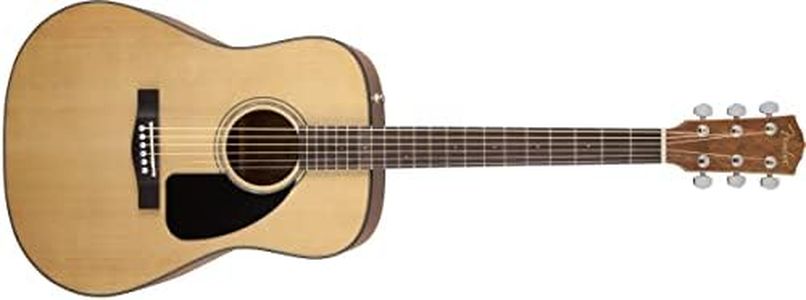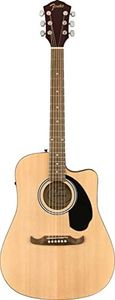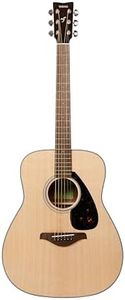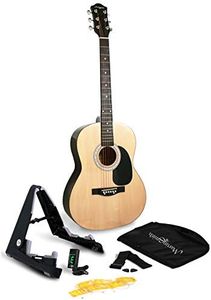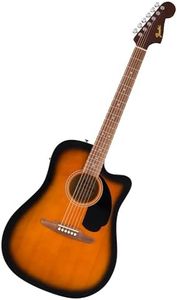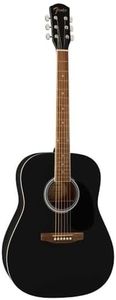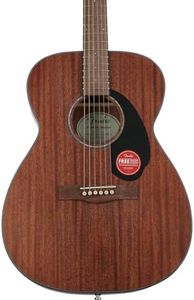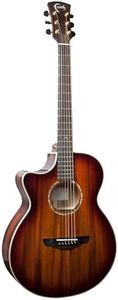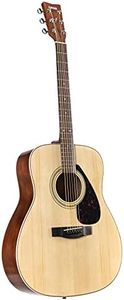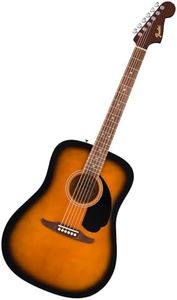We Use CookiesWe use cookies to enhance the security, performance,
functionality and for analytical and promotional activities. By continuing to browse this site you
are agreeing to our privacy policy
10 Best Acoustic Guitars
From leading brands and best sellers available on the web.Buying Guide for the Best Acoustic Guitars
Choosing the right acoustic guitar can be a rewarding experience, as it can greatly influence your playing style and enjoyment. When selecting an acoustic guitar, consider the sound quality, playability, and how it feels in your hands. It's important to think about your skill level, the type of music you want to play, and where you'll be playing most often. By understanding the key specifications of acoustic guitars, you can make an informed decision that suits your personal needs and preferences.Body ShapeThe body shape of an acoustic guitar affects its sound and playability. Common shapes include dreadnought, concert, and jumbo. Dreadnoughts are known for their bold, loud sound and are great for strumming and flat-picking. Concert guitars are smaller, offering a balanced tone and are easier to handle, making them ideal for fingerpicking. Jumbo guitars provide a deep, resonant sound and are perfect for players who want a big sound. Choose a body shape that feels comfortable to hold and suits the style of music you want to play.
TonewoodTonewood refers to the type of wood used in the construction of the guitar, which significantly impacts the sound. Common tonewoods include spruce, mahogany, and rosewood. Spruce is popular for its bright and clear tone, making it versatile for various music styles. Mahogany offers a warmer, more mellow sound, suitable for blues and folk. Rosewood provides a rich, complex tone with strong bass, ideal for fingerstyle playing. Consider the sound characteristics you prefer and choose a tonewood that matches your musical style.
Neck ProfileThe neck profile of a guitar refers to the shape and thickness of the neck, which affects comfort and playability. Profiles can range from slim to thick, with common shapes being C, V, and U. A C-shaped neck is rounded and comfortable for most players, while a V-shaped neck offers a more vintage feel, often preferred by players with larger hands. U-shaped necks are thicker and provide a solid grip, suitable for players who prefer a substantial feel. Try different neck profiles to find one that feels comfortable in your hand and suits your playing style.
Scale LengthScale length is the distance between the nut and the bridge of the guitar, affecting string tension and playability. A longer scale length, typically around 25.5 inches, provides more tension and a brighter tone, suitable for strumming and flat-picking. A shorter scale length, around 24.75 inches, offers less tension, making it easier to bend strings and play complex chords, ideal for fingerstyle and lead playing. Consider your playing style and comfort with string tension when choosing a scale length.
Nut WidthNut width is the width of the guitar's neck at the nut, influencing string spacing and playability. A wider nut width, around 1.75 inches, provides more space between strings, which is beneficial for fingerstyle players who need room for intricate finger movements. A narrower nut width, around 1.65 inches, allows for easier chord transitions and is often preferred by players with smaller hands or those who focus on strumming. Choose a nut width that feels comfortable for your hand size and playing technique.
ElectronicsSome acoustic guitars come with built-in electronics, allowing you to amplify the sound for performances. These systems typically include a pickup and preamp, which can vary in quality and features. If you plan to perform live or record, consider a guitar with a reliable electronic system that offers good sound quality and easy control over volume and tone. If you primarily play acoustically, electronics may not be necessary. Decide based on your performance needs and whether you require amplification.
